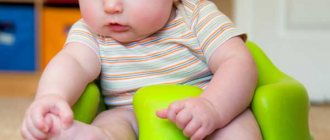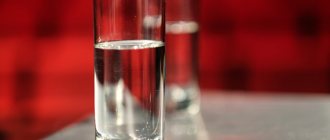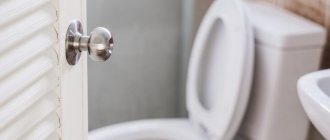Pediatricians traditionally believe that sucking a pacifier is a bad habit for a child, which is not recommended to be introduced even in infancy. Despite this, modern parents often strive, on the contrary, to accustom their newborn to the pacifier, since it can become an associative object for him, indicating the need to try to sleep.
Having an idea of which pacifiers are considered the most physiological (similar in shape and tactile sensations to a woman’s nipple), adults will be able to create a kind of ritual for the baby without harming the developing jaw and teeth.
Advantages and disadvantages of pacifiers
How to teach a child to suck a pacifier, parents need to decide only after a detailed study of the positive and negative aspects of this habit. This will help avoid negative consequences that may appear even after reaching 2 years.
| Benefits of pacifiers | Disadvantages of pacifiers |
|
|
Effect on breastfeeding
According to pediatricians and breastfeeding specialists, using a pacifier can shorten the duration of a baby's desire to feed on mother's milk. This is explained by the direct dependence of the amount of milk produced on the time the baby spends sucking the breast.
A child who uses a pacifier to satisfy the sucking reflex is applied to the breast exclusively for infrequent feeding, thus naturally suppressing lactation. Pediatricians have proven that the nipple has an impact on breastfeeding only if the introduction of this habit is improperly organized.
By following the recommendations of experts, parents can instill in their child a love for the pacifier without changing the way he or she feeds:
- It is necessary to offer a baby a pacifier only when he learns to grasp the nipple correctly during feeding, and the volume of milk produced by the mother’s body adjusts to the baby’s needs.
- At first, give the baby a pacifier only when he goes to bed or when the mother needs to do household chores without frequent distractions from the baby's cries.
- Children whose parents have decided to transfer them to artificial or mixed feeding should be given a pacifier after each feeding (this is necessary in order to avoid overeating and, at the same time, satisfy the baby’s sucking reflex).
To avoid trauma to the child’s psyche, you should not wean him from sucking a pacifier at the time of weaning. It is necessary to get rid of the habit only when the parent clearly sees the fading of the sucking reflex.
This is usually expressed in the fact that the baby begins not to suck the pacifier, but to play with it, chew it, lick it, or examine it from the side, without making any attempt to put it in his mouth.
Cons of using a pacifier
Despite the large number of advantages, using a pacifier also has a number of disadvantages that should also be taken into account:
- while sucking a pacifier, the child focuses too much on this process, this may interfere with his exploration of the world around him;
- often children who suck a pacifier begin to talk later than their peers; dentists also blame pacifiers for malocclusion (but whether this is 100% true has not yet been proven);
- Weaning a baby off a pacifier is sometimes more difficult than accustoming a baby to it;
- babies often confuse the pacifier with other objects (their own fingers, the edge of a blanket, etc.) and begin to suck on them;
- It is important for parents to constantly monitor the cleanliness and condition of the pacifier (the baby can chew it and throw it on the floor), and regularly sterilize it, but this is not possible in every situation. Unlike the mother's nipple, which is coated with a natural antimicrobial lubricant.
When to use a pacifier
How to accustom a child to sucking a pacifier, parents need to decide on their own, based on the individual characteristics of the character and behavior of the baby. Pediatricians who do not take a categorical position on the use of pacifiers.
They agree that it is most rational to offer it to a child if:
- the little person is full (he just ate, for example), but continues to open his mouth and tries to put various objects into it;
- the child is bottle-fed from the first days of life;
- a neurologist has diagnosed the child with increased excitability (such a diagnosis can only be made by a pediatric specialist based on test results and a full examination of the child);
- he suffers from excessive accumulation of gases in the intestines or severe colic;
- he was born prematurely (for such children, the pacifier is an additional way to strengthen the jaw muscles and develop the sucking reflex);
- it is planned to leave him without a mother for a long time (the pacifier gives the child a feeling of calm, which will help him cope with longing for the person closest to him);
- the baby must be reassured during prolonged crying or hysteria (for example, when undergoing tests or at an appointment with a doctor conducting an examination using various instruments);
- it is necessary to distract him (especially important for mothers of twins, when it is necessary to calm one of the children while feeding the second).
At what age should you teach
It is necessary to start introducing a baby to a pacifier 5-7 days after his birth. During this time, in the vast majority of cases, the mother not only “comes in milk”, but also begins to produce it in the amount necessary for the baby, and the newborn gets used to correctly latching onto the nipple when breastfeeding.
In some cases, mothers' attempts to teach their baby to use a pacifier immediately after birth fail. A child who feels protected only in the presence of his mother, feeling her smell and body warmth, pushes away an unfamiliar object. On an instinctive level, he perceives the pacifier as a signal that they are trying to deceive him by replacing a loved one with a silicone object.
How to teach a child to use a pacifier? If the child protests, then attempts must be repeated later.
In this case, it is not recommended to insist and slip a pacifier, despite his protests. This can provoke disturbances in the development of its central nervous system. If a child refuses a pacifier in the first weeks of life, it is worth repeating attempts to introduce him to it only after 2-3 months. During this period, the baby will get stronger, get used to living in the outside world and establish a psycho-emotional connection with the mother.
If the baby refuses the pacifier even after 3 months, you can try postponing the next attempt until he reaches 6 months of age. If, even after six months, an attempt to introduce a new habit is not successful, you should abandon this idea and no longer insist on the child accepting the pacifier.
When to start pacifier training?
An artificial baby should be introduced to a pacifier from birth.
Nursing mothers first need to normalize the process of breastfeeding, and most importantly, milk production. Early accustoming to a pacifier in this case is fraught with the baby's complete refusal to breastfeed. Pediatricians do not recommend giving a newborn baby a pacifier.
The optimal age for this is 2-3 weeks from birth. For premature and weak babies - at 2-3 months, pacifiers that form the bite are indicated from 7 - 10 months.
You should not insist if the child initially refuses to accept the pacifier. After a while, you need to repeat the procedure, each time offering a new pacifier. If the child still does not want to take a pacifier before 5 months, then you should stop training.
How to choose the right one
Accustoming a child to sucking a pacifier should be accompanied by an understanding of how to choose a pacifier so that it is not only accepted by the baby, but also does not have a negative impact on the formation of the bite and setting of the teeth.
| Classification of pacifiers | Detailed characteristics of varieties |
| Types of pacifiers (general classification) | For the convenience of parents, pacifier manufacturers put marks on the packaging of their product regarding the recommended age of the child who will use the pacifier (for example, 0+ - the pacifier can be used from birth; 3m+ - a pacifier suitable for children over 3 months of age, and so on) . In addition, the packaging of the purchased pacifier must contain information about its subtype within the general classification of goods of the type in question:
|
| Material of manufacture | When creating the first pacifiers, ordinary rubber was used. Rubber nipples were too hard, caused discomfort to the child during sucking and negatively affected the formation of teeth and the formation of the child's jaw. It was this type of pacifier that formed the stereotype about the dangers of using pacifiers by young children. In the modern world, production technologies for goods in this segment have changed and now on the consumer market you can only find nipples made from:
|
What to look for when choosing a pacifier
There are many types of pacifiers.
They differ in:
- shape and size of the sucking part;
- the material from which they are made;
- the shape of a mouthpiece.
You should buy not one, but several different pacifiers, since the baby may not like the color, shape, or material of any one pacifier.
Shape of sucking part
She may be:
| Nipple shape | Its peculiarity |
| Round | This pacifier model is considered a classic, as it appeared earlier than the others. This is what our grandparents gave to our fathers and mothers. |
| Anatomical | It is characterized by an oblong shape, slightly flattened on one side of the sucking part. Thanks to this, one side equally distributes pressure on the palate, and the other is adjacent to the tongue. When using such a pacifier, the baby never swallows air. |
| Orthopedic | The nipple is presented in the form of a drop. Although this model was developed relatively recently, it has already gained great popularity among mothers. This is what it is suggested to give to babies when teething. Thanks to it, the correct bite is formed. |
It is not recommended to give infants a classic pacifier often. Because of it, the baby may develop an incorrect bite, as well as disrupt the formation of teeth and jaw.
Size
It is selected depending on the age of the child. There are:
- from 0 to 3 months;
- from 3 to 6 months;
- from 6 to 18 months;
- from 18 and older.
In addition to age, the individual characteristics of the child must be taken into account
Material
A lot can also depend on this characteristic of the pacifier. So, some children like a pacifier made of rubber, others - from silicone, and others - from latex. Let's look at each material in a little more detail.
| What is the pacifier made of? | Its peculiarity |
| Rubber | It has a specific smell. It has poor resistance to mechanical and temperature influences. May cause allergies in infants. Short shelf life: it quickly deforms, breaks down, and breaks when squeezed too hard. Because of this, the newborn swallows air. This is the oldest type of material from which the pacifier is made. The price for it is very small. |
| Silicone | There is no specific taste. It can be used for a long time, as this nipple is wear-resistant. Copes well with temperature influences. It is allowed to boil frequently. Hypoallergenic. It can only be used until teeth begin to erupt. Then it should be replaced with a pacifier made of a different material. This one is considered too tough. It can have a negative impact on the baby’s still fragile baby teeth. |
| Latex | Feels soft and elastic. As a rule, nipples made of this material are light brown or transparent in color. They have a specific smell. They attract dirt and dust. With prolonged use, they acquire an unpleasant aftertaste for the baby, “stick together”, and also increase in size. They deteriorate when exposed to high temperatures. Foamed Hevea juice, as well as the rubber from which real silicone is made, can cause an allergic reaction in infants. The advantage of latex pacifiers is that they do not deform the baby’s teeth. This pacifier is recommended for use by weak and premature babies, as well as healthy babies in the first months of their life. |
Mouthpiece shape
This is the name of the part of the pacifier that is adjacent to the sucking part. It is no less important than the size and shape of the nipple. Often, it is because of an uncomfortable mouthpiece that a baby refuses to suck a pacifier.
So, if it is round and large, the baby is unlikely to suck on it. It will simply be difficult for him to breathe because of her. Due to the feeling of discomfort, he will constantly spit it out.
What are there besides the one mentioned:
- oval with a cutout under the nose, the crumbs fit tightly to the lips (because of this, after prolonged sucking, a pacifier mark may appear around them);
- oval with raised edges. These do not leave marks around the baby’s mouth after using them.
Rings are often attached to the nipples. They can be used to attach a pacifier to a newborn's clothes. This device is universal for many mothers, because thanks to it the pacifier does not fall to the ground, and it does not need to be constantly boiled.
Pacifiers with rings are suitable for times when babies are awake. You should avoid them during sleep.
Training methods
How to teach a child to suck a pacifier must be decided taking into account the age of the growing person.
| Child's age | How to accustom a baby to a pacifier |
| Newborn (from birth to 3 months) | At this age, a child can be accustomed to using a pacifier by quietly replacing the breast with a pacifier at the moment the baby goes to bed. To do this you need:
|
| From 3 to 6 months. | During this period, children's teeth begin to “drop”, preparing to cut through the gums and crawl out in the near future. This causes severe discomfort: the gums itch or hurt, and it is not possible to identify the source of the discomfort. Older children cannot be fooled by replacing the mother's breast with a pacifier. At this age, parents need to:
|
Useful tips
Under no circumstances should you use grandma’s advice on lubricating the nipple with sweet water or honey/jam, or putting it in your mouth and licking it, and then giving it to your baby.
Maintaining hygiene is the main principle: pacifiers must be boiled daily for about 2-3 minutes.
It is better to purchase several pacifiers and store them in a special container.
Remember that you can only use a pacifier for 1 – 1.5 months.
Boundless love for the main meaning of life will help you easily cope with any problem, and your baby will happily smack his pacifier.
Doctor Komarovsky's opinion
Regarding the pacifier, the opinion of a famous Ukrainian pediatrician is ambiguous. According to him, harm from holding a foreign object in the mouth occurs from time to time. The doctor is confident that if a child periodically uses a pacifier throughout the day, there will be no negative consequences for the formation of a child’s bite.
There is a danger only if the baby is constantly with the pacifier in the mouth (both while awake and during sleep).
Therefore, according to Komarovsky, it is possible to use a pacifier, but in moderation. The only thing you should definitely avoid is allowing your baby to have a pacifier in his mouth while sleeping.
This not only has a detrimental effect on the developing jaw, but also creates associations that, with age, will prevent the child from sleeping soundly at night (when the pacifier falls out of the mouth, such children wake up, cry and do not calm down until they are helped to find the pacifier).
If a child refuses a pacifier
How to teach a child to suck a pacifier if he refuses it, parents should choose for themselves, based on the options offered by pediatricians and lactation consultants.
For example:
- offer the baby a choice (buy several types of nipples of different shapes and materials and let each of them “taste”);
- dip the “tip” of the pacifier into mother’s milk or the baby’s usual formula;
- support the pacifier in the baby's mouth until he learns to hold it independently (an alternative method is to prop the pacifier with a diaper or blanket).
It is known that sucking a pacifier is not the most important action in a child’s life, without which his development will not proceed correctly.
Therefore, a little person should be taught to use a pacifier gently and unobtrusively, avoiding both rudeness and excessive persistence, as well as smearing the pacifier with honey or jam (this can provoke an acute allergic reaction of the child’s body to the increased content of refined sugar).
Article design: Oleg Lozinsky











